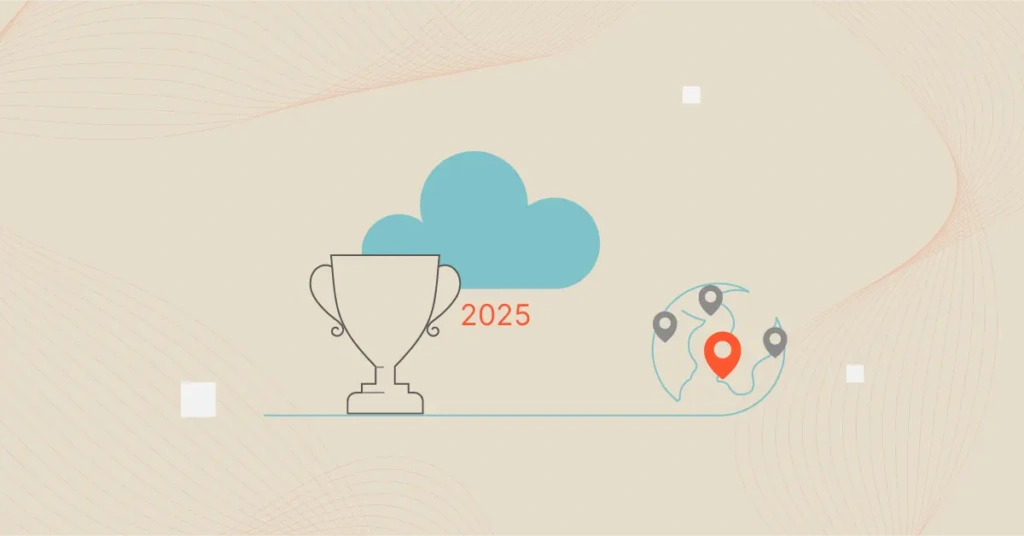We recently explored what the cloud is and how it has evolved over 60 years. Yet, cloud computingWe recently explored the cloud and how it has evolved over 60 years. Yet, cloud computing emerged into what it is today in 2002, when Amazon, the e-commerce giant, sought a more efficient way to expand its online marketplace.
So, it is unsurprising that the company’s cloud services subsidiary (AWS), which launched in 2006, is today’s largest Cloud Service Provider (CSP).
This CSP market share guide shares the details of the cloud infrastructure market, the dominant players, and more.
What Is A Cloud Service Provider?
A cloud service provider rents out the combination of technology, infrastructure, and expertise to other companies and individuals for cloud computing, including online storage, compute, and networking over the Internet.
Cloud service providers own and operate multiple data centers worldwide that house the physical infrastructure required for cloud computing. These include servers, hard drives, and cooling systems.
Anyone anywhere at any time can access this cloud infrastructure by connecting to these data centers and purchasing as much capacity as they require on a pay-as-you-go basis (usage-based pricing).
CSPs deliver other benefits, too.
What Are The Benefits Of Using A CSP Vs. Building On-Premises?
Companies often avoid building their own cloud infrastructure because it is expensive, requires extensive expertise, and requires constant maintenance. Many companies prefer not to handle all of this, especially since using a robust cloud service provider delivers more benefits, such as:
- Low capital outlay – Customers do not incur large capital expenditures (CAPEX) on infrastructure, but instead pay a low, ongoing fee for their usage.
- Faster time-to-market – Businesses can produce their products and services much more quickly by not purchasing, installing, testing, and optimizing cloud infrastructure.
- Agility – CSPs enable cloud-based brands to pivot faster since they do not need to sell existing infrastructure and purchase updated ones whenever they want to explore new markets or lines of business.
- Cloud computing services – CSPs deliver Infrastructure-as-a-Service (IaaS), Platform-as-a-Service (PaaS), Software-as-a-Service (SaaS), and Serverless Computing
- Optimal cloud delivery models – Businesses can choose between public, private, hybrid, and multi-cloud cloud services from cloud service providers.
- Pay-as-you-go pricing – You pay only for the capacity of cloud resources you use. No provisioning, upfront payments, or long-term contracts are required either.
- Managed services – A CSP grants various degrees of control over the infrastructure they rent out. This infrastructure can be fully managed by your CSP or largely configured by your engineers.
- Disaster recovery – A CSP can backup your data in multiple regions worldwide, which you can retrieve in case of a data center failure in one region or your on-premises system.
CSPs also test, update, secure, and optimize cloud infrastructure and its support services on your behalf. This frees up your time, money, and effort to focus on other business areas. But the cloud model has its challenges.
What Are Some Challenges Of Using A CSP?
The top challenges of using cloud service providers include:
Data confidentiality
The public cloud depends on a network of third-party-owned, shared, and remote servers to process, store, and manage data. That is, rather than local storage devices a single customer owns and controls, such as an on-premises data center or office computers. Businesses concerned about securing business secrets, customer data, and compliance information find this concerning.
Data security
Cloud computing over a CSP’s infrastructure involves transferring data remotely and accessing it from any computer or device with an internet connection. Yet, CSPs are not infallible, so hackers can infiltrate their systems and compromise customer data, resulting in reputational damage, losing customers, and lawsuits.
Infrastructure control limitations
To optimize the performance of their cloud services, some companies prefer more control over the backend. However, this has varying limitations, depending on the cloud service provider.
Vendor lock-in
Over-reliance on a single cloud service provider can be problematic. For example, if your current CSP changes its pricing or makes other unfavorable changes, it may be expensive and tedious to migrate your applications to another CSP.
To work around these challenges, many companies are now embracing a multi-cloud strategy.
Multi-Cloud Strategy: Using Multiple Cloud Providers
A multi-cloud strategy means running your workloads across two or more cloud service providers. It’s become a popular approach for companies that want flexibility, reduce risk, or avoid vendor lock-in.
Instead of relying on one provider, businesses spread their services — for example, using AWS for compute, Azure for machine learning, and GCP for data analytics. This approach can help balance performance, availability, and cost across regions and platforms.
Multi-cloud also improves resilience. If one provider goes down, others can keep services running. And with the right setup, you can optimize each workload for the provider that handles it best.
Most CSPs now support multi-cloud setups. Azure Arc, Google Anthos, AWS Outposts, and CloudZero’s cost visibility tools help teams monitor and manage cross-cloud deployments.
Still, even with more companies adopting multi-cloud strategies, three cloud giants dominate the global market.
What Is The Market Share Of The Big Three (AWS, Azure, GCP)?
As of Q1 2025, the global cloud infrastructure market is led by three major providers:
- Amazon Web Services (AWS): 29% market share
- Microsoft Azure: 22% market share
- Google Cloud Platform (GCP): 12% market share
These three providers account for approximately 63% of the global cloud market.
Here is a quick table with each provider’s offerings and market positions as of 2025:
|
Feature |
AWS |
Azure |
GCP |
|
Market Share (Q1 2025) |
29% |
22% |
12% |
|
Global Regions |
36 |
60 |
42 |
|
Availability Zones |
114 |
126 |
127 |
|
Services Offered |
200+ |
200+ |
100+ |
|
Strengths |
Broad service range, global reach |
Enterprise integration, hybrid cloud |
Data analytics, AI/ML capabilities |
|
Ideal for |
Startups to enterprises |
Businesses using Microsoft products |
AI/ML-focused organizations |
|
Pricing model |
Pay-as-you-go, reserved instances |
Pay-as-you-go, reserved instances |
Pay-as-you-go, committed use discounts |
Note: The number of regions and availability zones is approximate and subject to change as providers expand their infrastructure.
How To Choose A Cloud Provider: Important Factors To Consider
Not all cloud providers are built the same. Here are the key things to think about when picking the right one:
- Cost – Look beyond sticker prices. Check billing transparency, discount programs, and cost predictability.
- Performance and scalability – Can it handle your workload as you grow? Pay attention to uptime, speed, and global infrastructure.
- Security and compliance – Does it meet your data privacy, industry, or regional compliance needs (like HIPAA or GDPR)?
- Support – What support levels are available? Do they offer 24/7 help, dedicated reps, or self-service options?
- Integrations – Will it fit easily with your existing tools, apps, and workflows?
- Deployment flexibility – Does it support public, private, hybrid, or multi-cloud setups?
- Location – Where are their data centers? Proximity can affect latency and compliance.
- Ease of use – How intuitive is their dashboard or API? Simpler tools save your team time.
And now, here are the best CSPs available today.
Top Cloud Service Providers In 2025
The following cloud providers power the most innovative companies in the world — well, at least those with part or all of their operations running in the cloud.
1. Amazon Web Services (AWS) – Infrastructure-as-a-Service (IaaS)
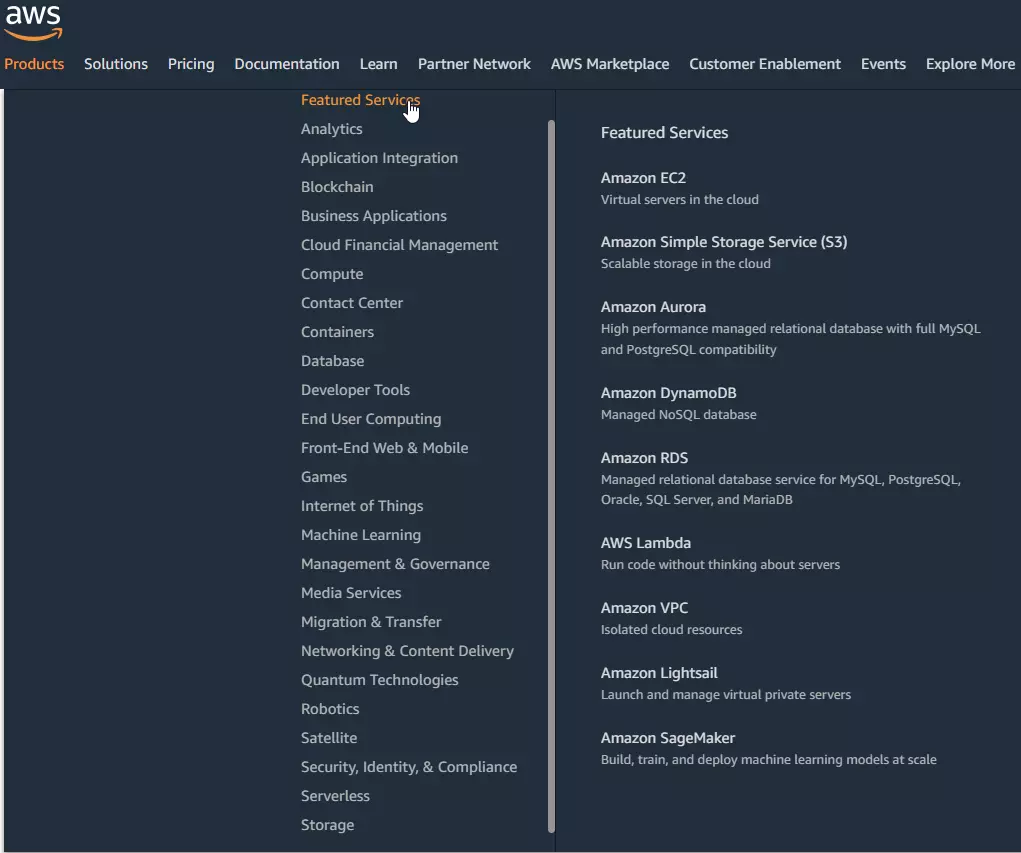
Amazon Web Services (AWS) delivers over 200 cloud services across multiple industries and technology categories.
However, AWS is best known for its emphasis on IaaS, supported by its Elastic Compute Service (Amazon EC2 for compute), Simple Storage Service (Amazon S3 for storage), and Relational Database Service (Amazon RDS for databases).
With over 100 Availability Zones across 31 geographic regions, AWS currently takes up over 34% of the global cloud computing market share.
Also, while AWS is best known for its highly scalable public cloud offering, it also supports on-premises, private cloud, hybrid cloud, and multi-cloud deployments. AWS offers a mix of free, affordable, and premium services, and is popular for its quick start-up process.
Related article: Top 25+ AWS Cost Optimization Tools And Best Practices
2. Microsoft Azure – Hybrid cloud and enterprise cloud services
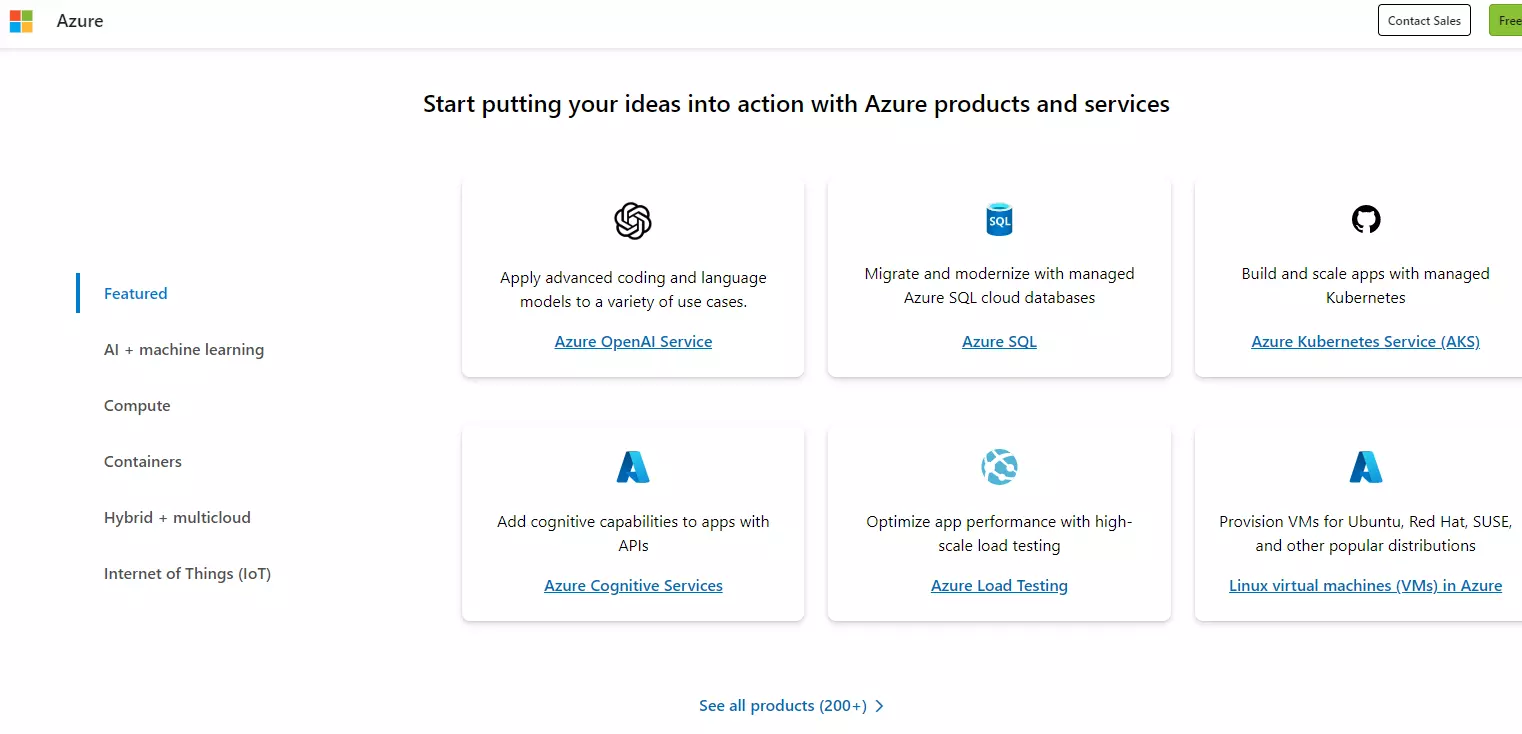
The Microsoft Intelligent Cloud delivers AWS-like cloud computing services through the Azure Cloud in over 116 Availability Zones.
The Azure cloud delivers over 200 cloud services in the form of Infrastructure-as-a-Service (IaaS), Platform-as-a-Service (PaaS), Software-as-a-Service (SaaS), as well as Edge and Serverless computing.
Azure was first announced two years after AWS launched in 2006, but it launched in 2010. It has since gained market share to 23% from AWS by appealing to enterprises, hybrid cloud embracers, and companies that mainly use Microsoft products, including Office 365.
Related article: Azure Cost Management Tools: A Comprehensive 2025 Guide
3. Google Cloud Platform – AI, ML, and Kubernetes
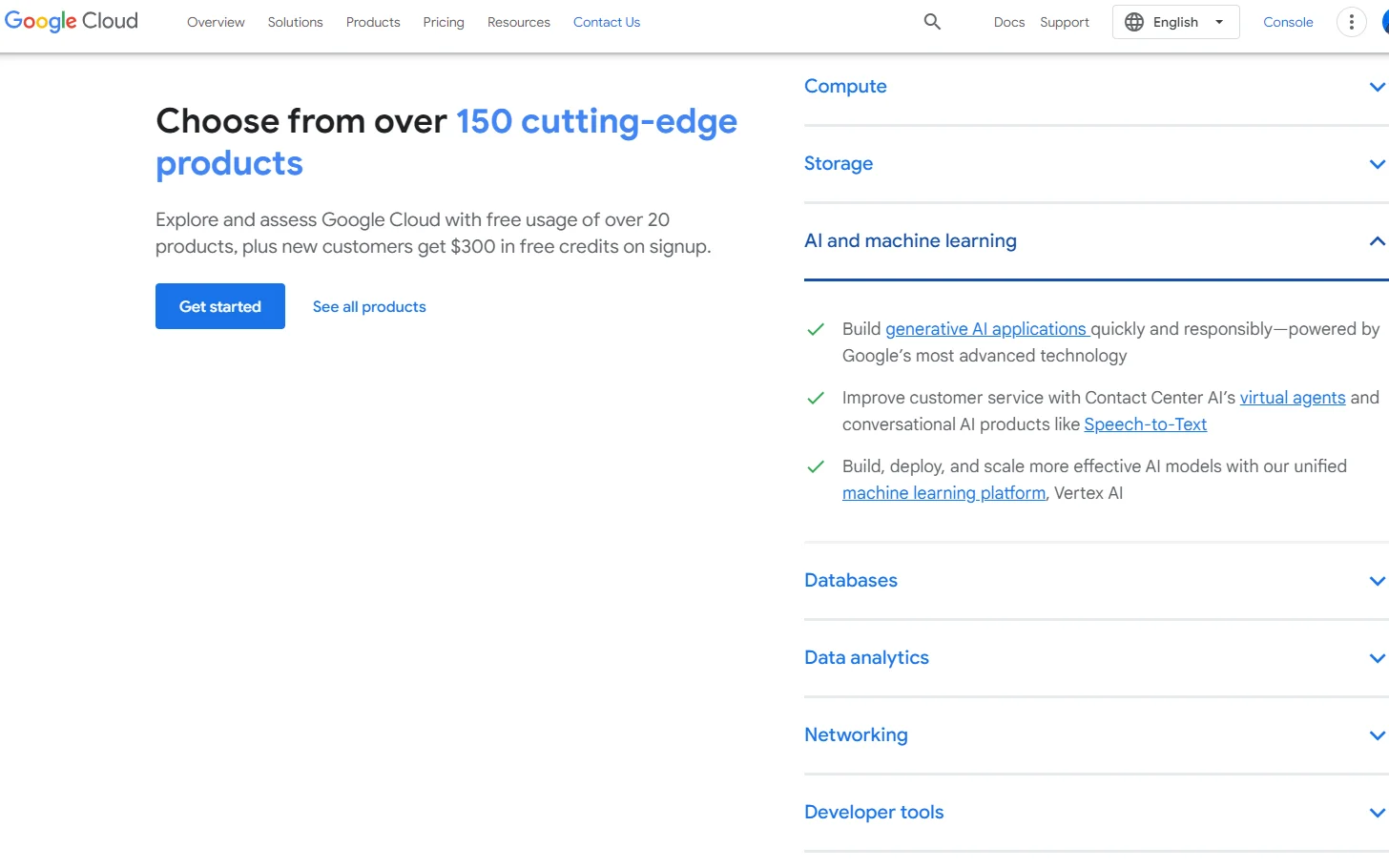
The Google Cloud Platform offers similar services to Azure and AWS, although it has carved a niche for itself through innovations across Artificial Intelligence (AI), Machine Learning (ML), Data Analytics, and Kubernetes, the popular container management platform.
GCP is also popular with smaller companies who routinely use Alphabet’s services such as Google Workstation (Docs, Spreadsheets, Gmail, etc), Google Drive, YouTube, and Google Console.
Related article: 15+ GCP Cost Optimization Tools In 2025
4. Alibaba — The Largest cloud service provider in Asia
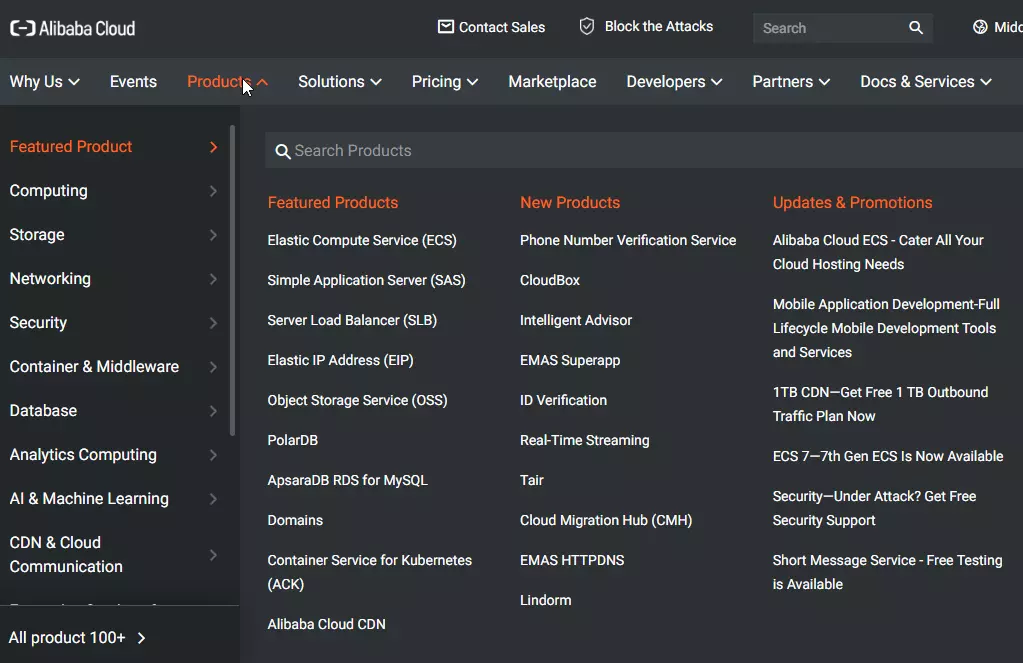
If your business operates in Southeast Asia and is considering cloud adoption, Alibaba will be one of your top choices. Like AWS from Amazon, Alibaba evolved from the Alibaba e-commerce arm, growing to take up about 5% of the global cloud services market since 2009.
Alibaba Cloud supports major operations for large and small enterprises, SMEs, governments, and non-profit organizations.
5. IBM Cloud – Multi-cloud CSP
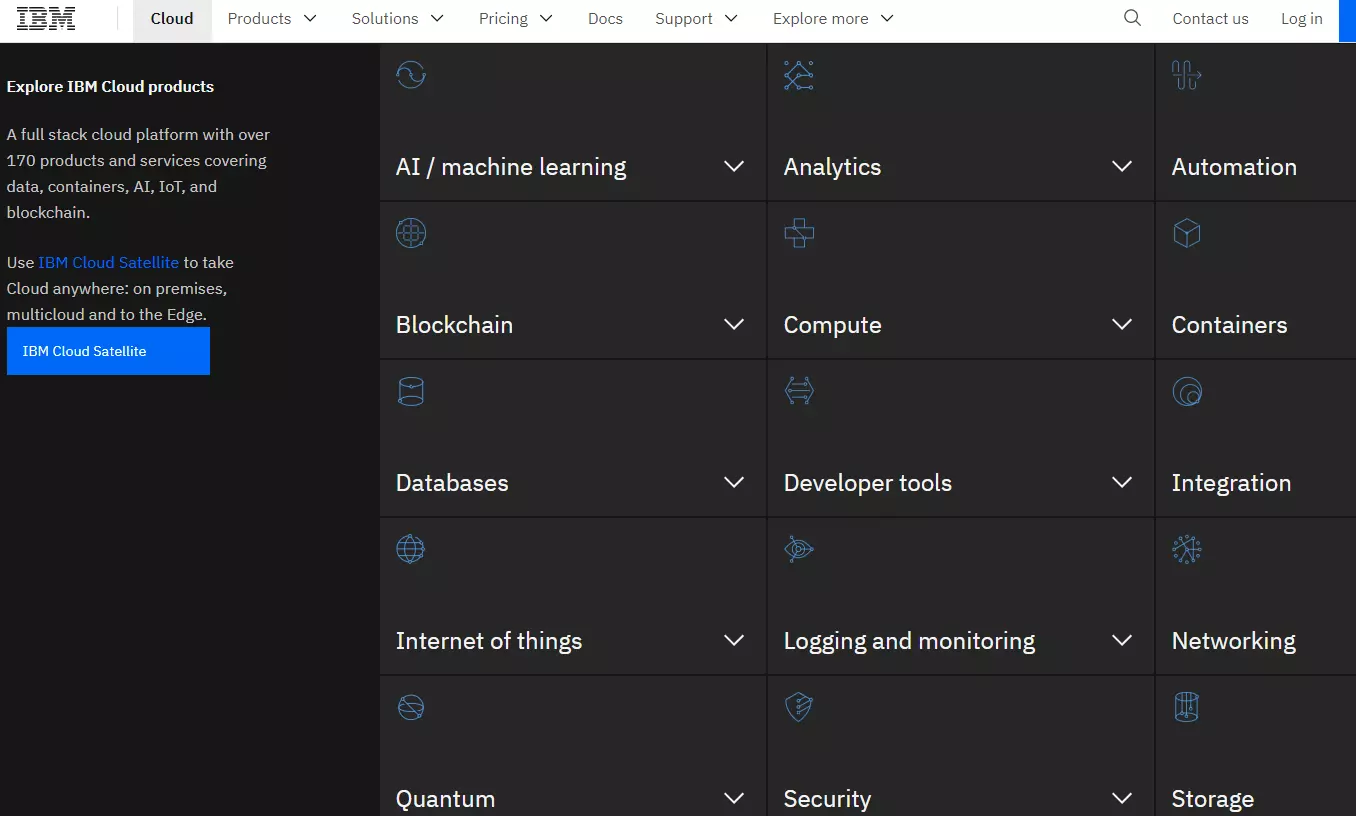
IBM Cloud Services help businesses that want to stick to a familiar, on-premises environment transition to digital brands without hassle. The CSP supports about 4% of the cloud computing services market, offering over 170 products across On-premises, hybrid cloud, and multicloud deployments.
Like the big four providers, IBM is also big on managed Infrastructure-as-a-Service (IaaS) and cloud migration services.
6. DigitalOcean Cloud – Cloud computing tools for SMBs and developers
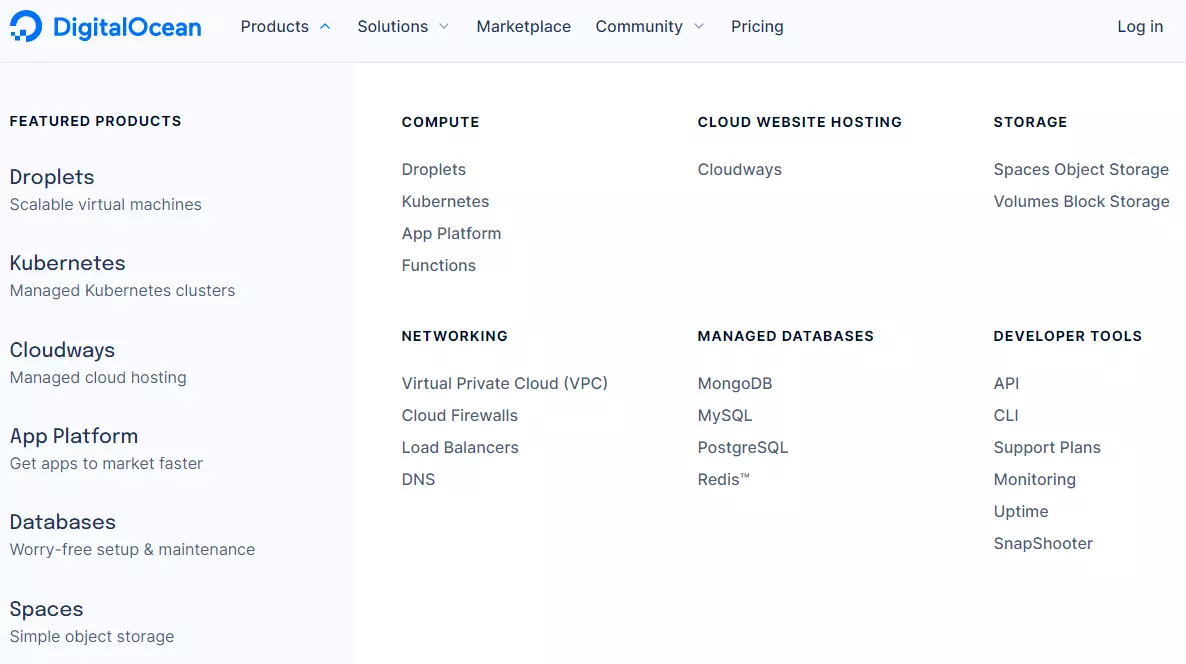
The DigitalOcean Cloud platform provides developers a platform for deploying and scaling projects on multiple computers simultaneously. It is the third-largest hosting company worldwide, with two primary product offerings: compute and storage.
Like others here, Digital Ocean delivers IaaS, although focusing on small and medium businesses, and charges its cloud computing services on a pay-as-you-go model.
Related article: DigitalOcean Vs. AWS: Which Solution Offers The Best Value?
7. Salesforce Cloud – Cloud-hosted services
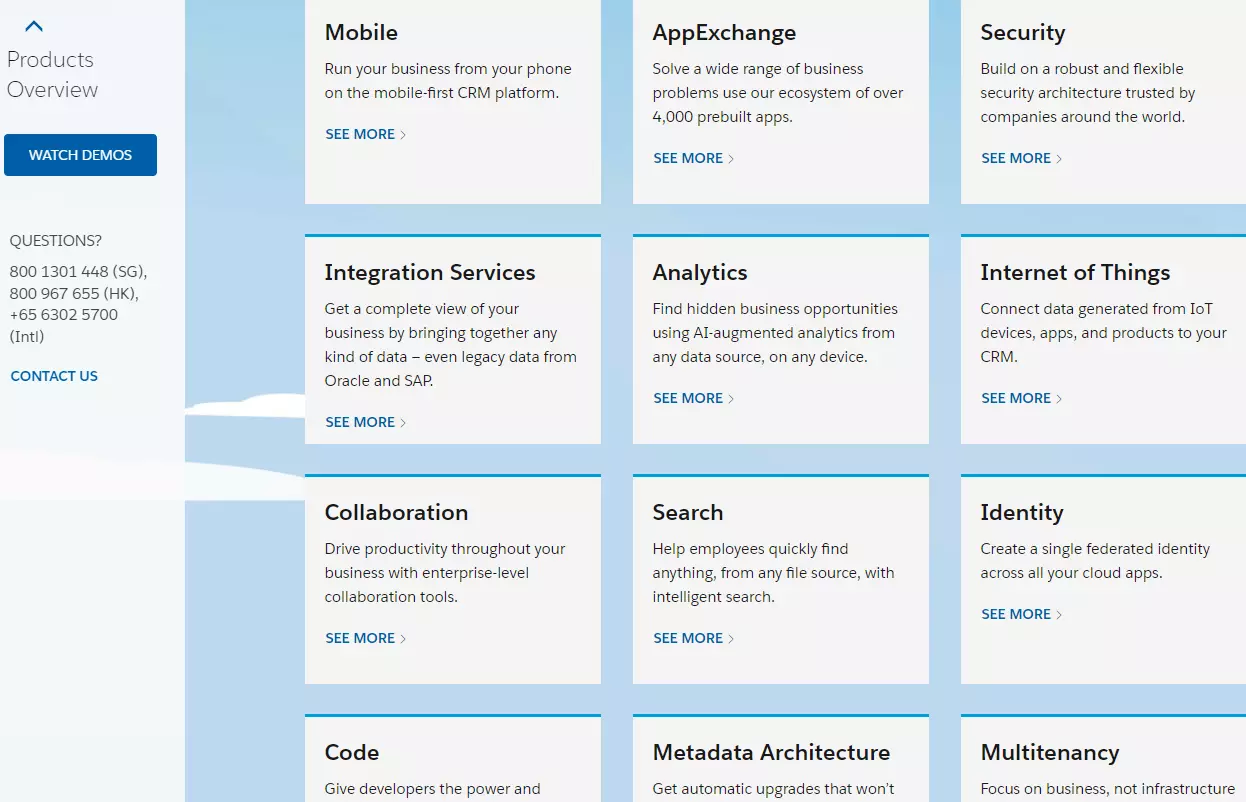
Salesforce pioneered the Software-as-a-Service (SaaS) model in its current form in the late 1990s. Today, the CSP offers different types of clouds in the form of cloud-based applications across marketing, sales, experience, analytics, commerce, and services.
Salesforce Cloud services also power the company’s best-known product, customer relationship management (CRM) suite of tools.
8. Tencent Cloud
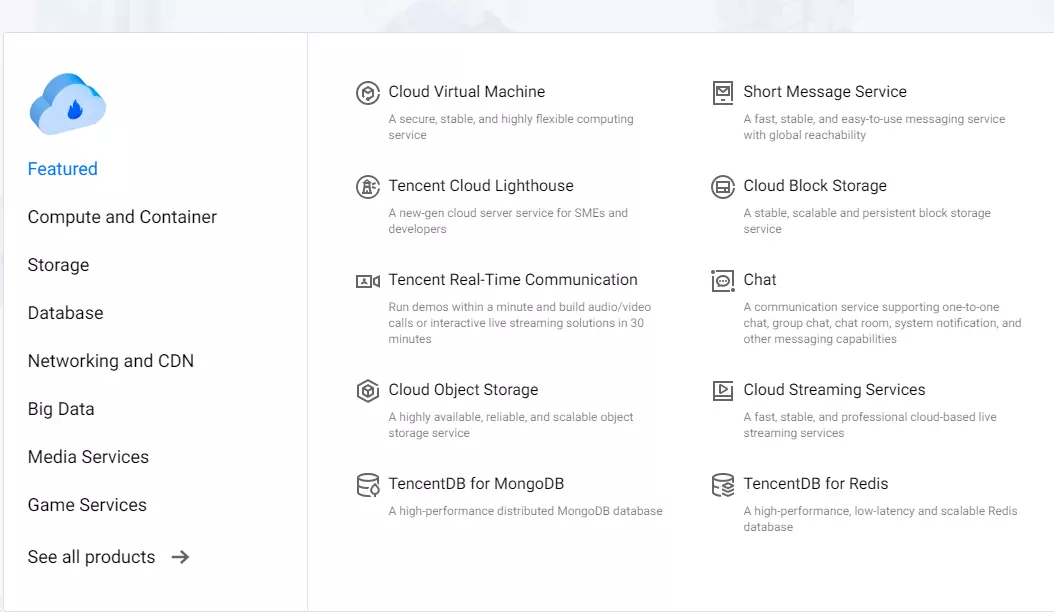
The Tencent Cloud provides a host of cloud computing services, from cloud virtual machines to cloud file storage, and more. Like Alibaba Cloud computing services, Tencent is a major player in China.
Yet, the CSP runs across 26 regions, operating over 70 Availability Zones in Northeast and Southeast Asia, South Asia, Oceania, Europe, and North and South America.
9. Oracle Cloud Infrastructure (OCI) – All-around CSP with a focus on databases, custom apps
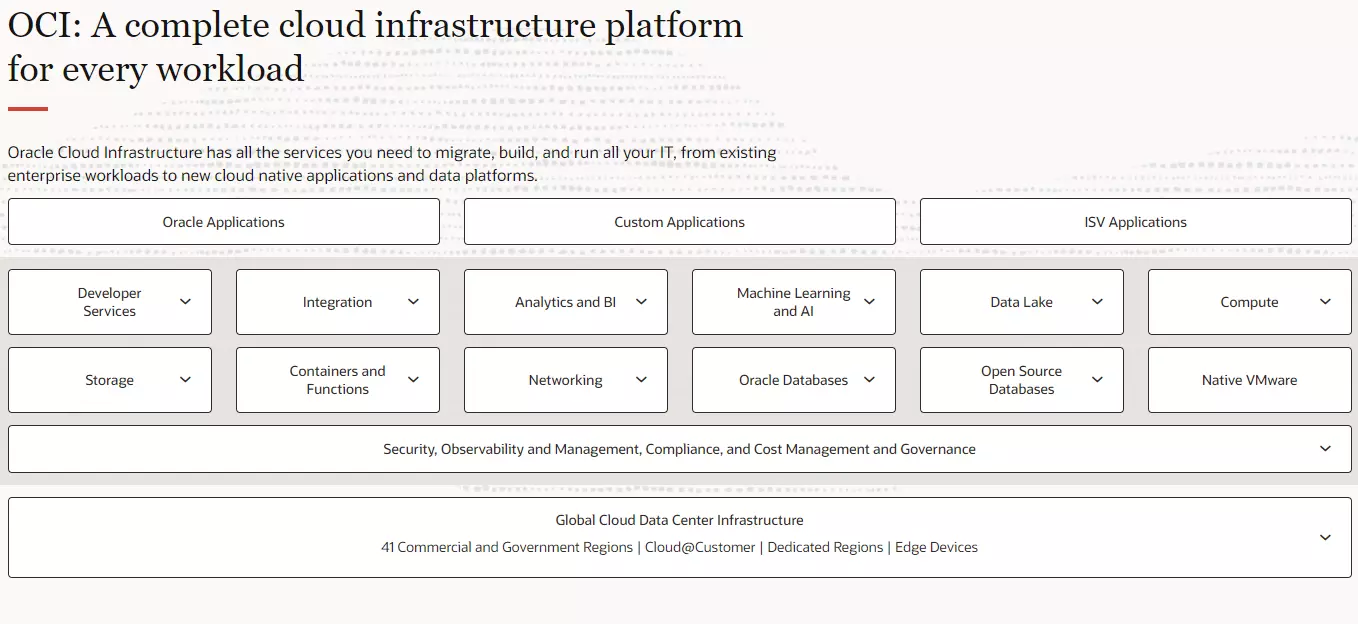
Oracle was the first vendor to offer IaaS, PaaS, and SaaS cloud delivery models within a single platform. With OCI, you can access a range of cloud services wherever you are. Oracle cloud services include on-premises, hybrid, public, and dedicated Cloud@Customer. It also delivers multi-cloud solutions, including Oracle Database Service for Microsoft Azure.
Like the big four CSPs, OCI’s distributed cloud portfolio is available across multiple regions worldwide and supports pay-as-you-go pricing.
10. Huawei Cloud – Going Global
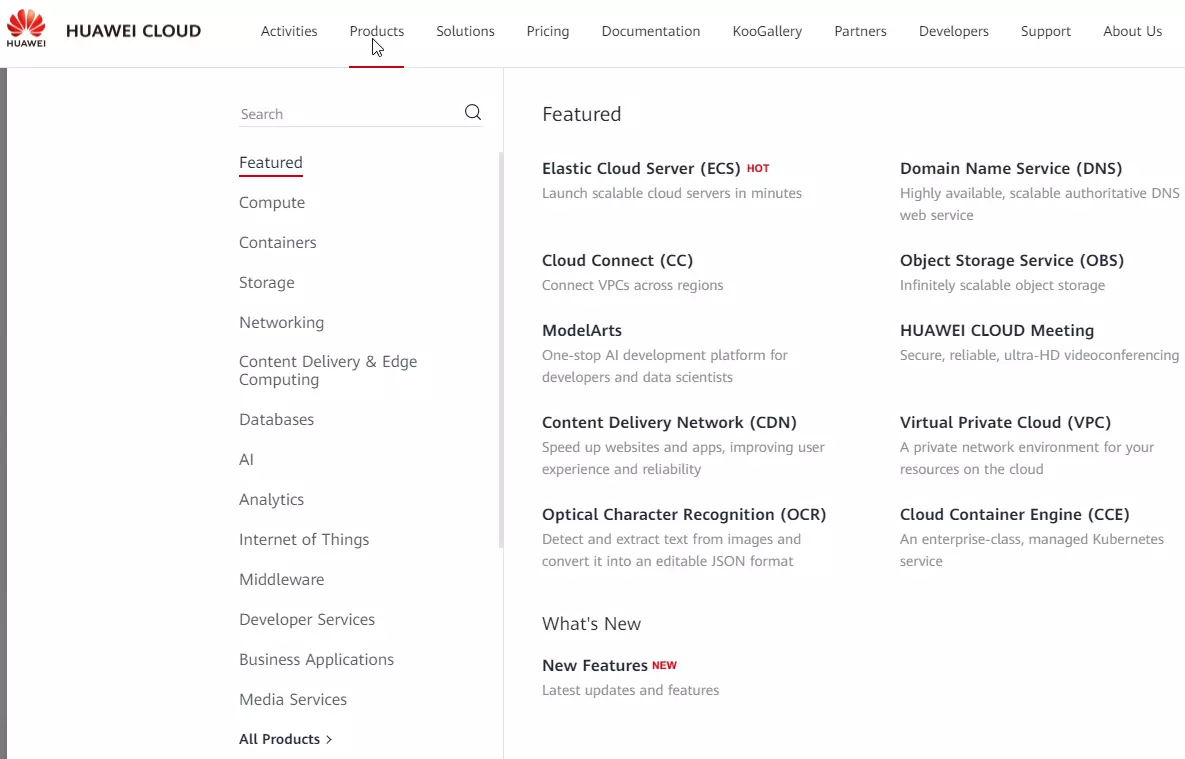
After capturing 18% of the Chinese cloud market, Huawei aims to deliver a broad range of cloud computing services across 170 countries. This plan to become a global CSP makes Huawei Cloud a contender for providing cloud services in the future.
11. Dell Technologies Cloud – Virtualization Via VMware
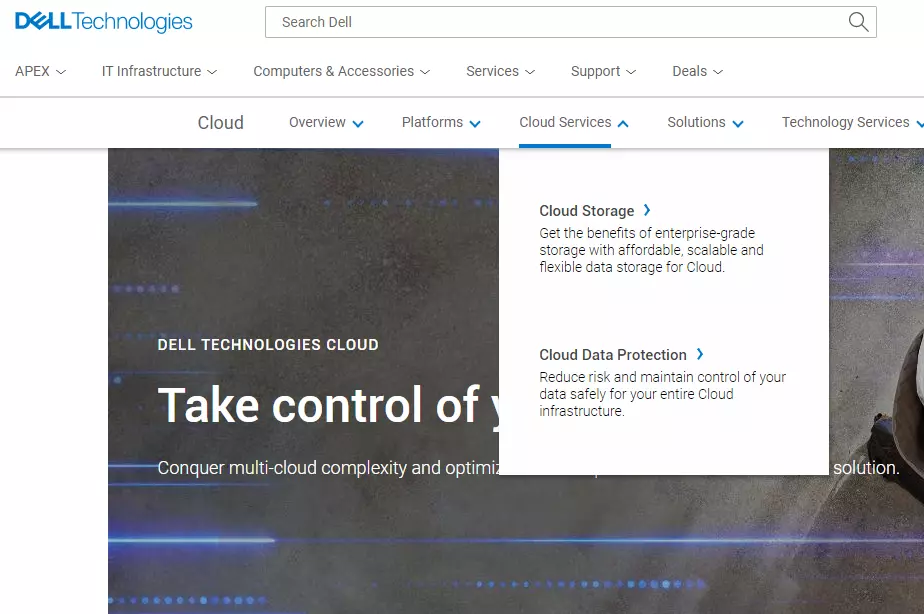
Dell provides an integrated multi-cloud platform using VMware software and Dell Technologies infrastructure. And, as a hybrid, multi-cloud provider, the company emphasizes storage and data protection services. The Dell Technologies Cloud is enterprise-grade, providing highly scalable and secure cloud services.
12. Cisco Cloud Solutions – Best Used For Hybrid Cloud Strategies
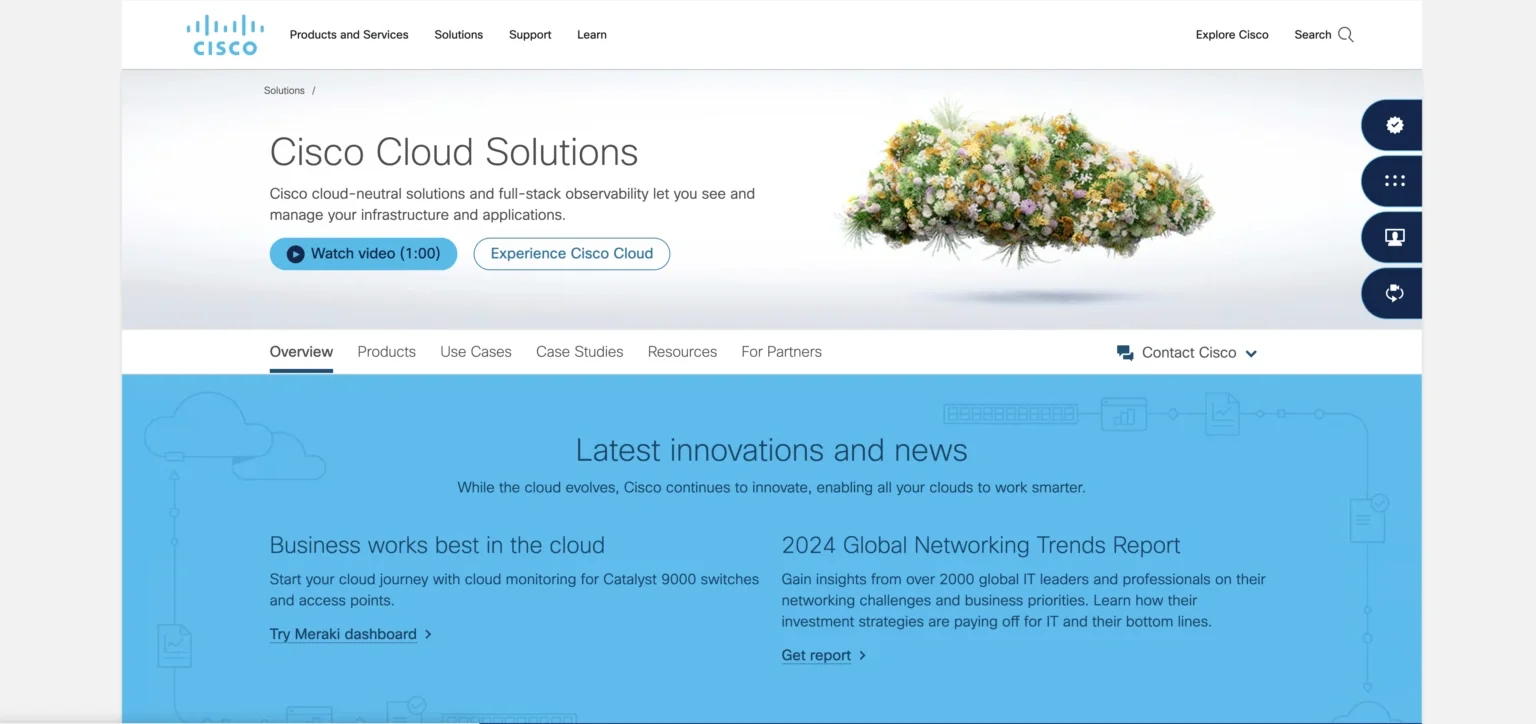
Cisco is one of the older players in this field. The company was founded back in 1984 with the focus of connecting computers through a local area network (LAN) and connecting distant computers through a multiprotocol router system.
While they were pioneers in their founding, they were a little late to join the cloud market, having launched their Global InterCloud solution in 2014. Being that late means a smaller market share than the big three, but they still have a lot to offer, particularly for customers looking for a hybrid cloud solution.
Its multi-cloud solutions enable seamless integration and management, optimizing workloads and enhancing operational efficiency.
The user-friendly interfaces and comprehensive support services simplify cloud resource deployment and management, easing the complexity of migration. They might be best known for their strong security protocols, which ensure data integrity and privacy across environments.
13. Linode (Akamai Connected Cloud) – Developer-Centric Cloud with Global Edge Capabilities
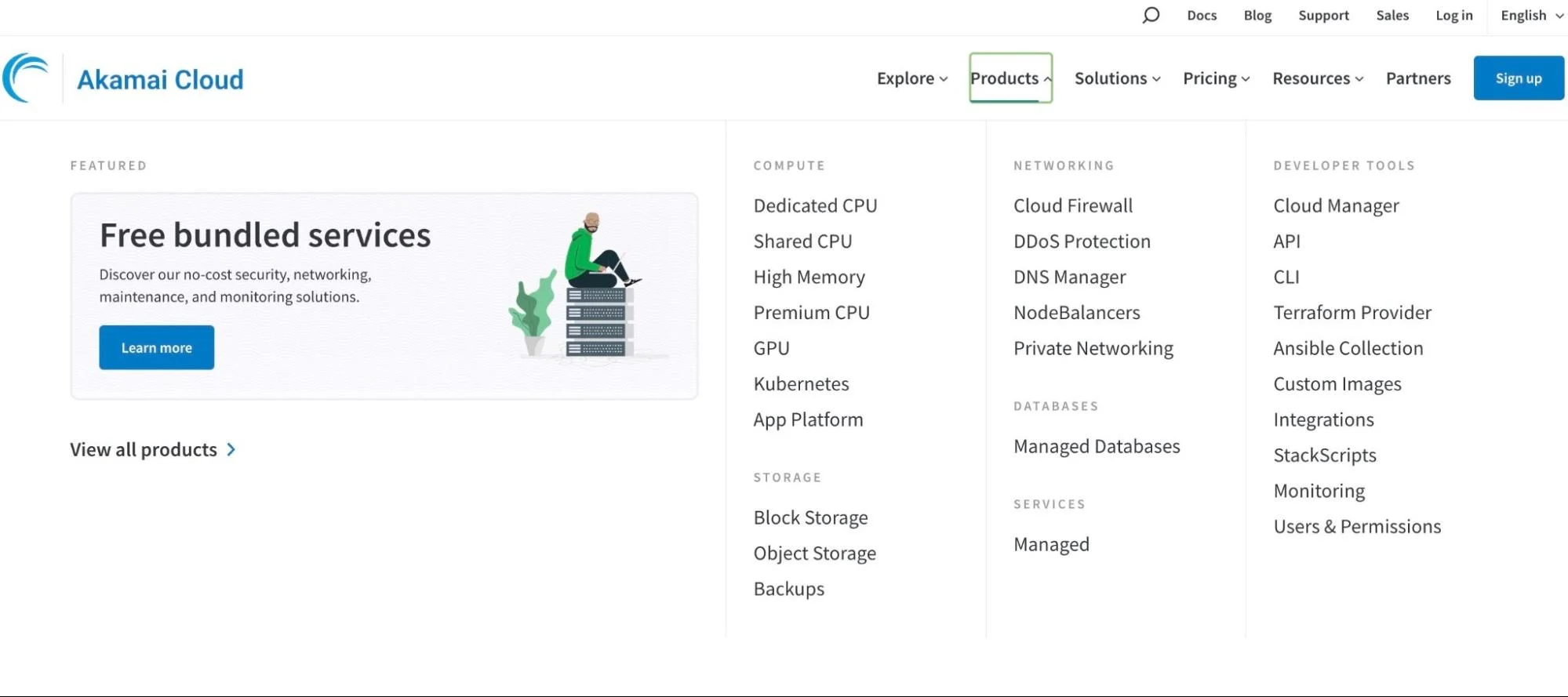
Linode, now part of Akamai Connected Cloud, is known for its simplicity and developer-friendly experience. It offers Linux-based VMs, Kubernetes, object storage, and one-click apps — all with flat, predictable pricing.
Since joining Akamai, Linode has benefited from a robust edge network in over 100 countries. This brings faster performance, tighter security, and lower latency for globally distributed apps.
14. Wasabi – Cheap block storage
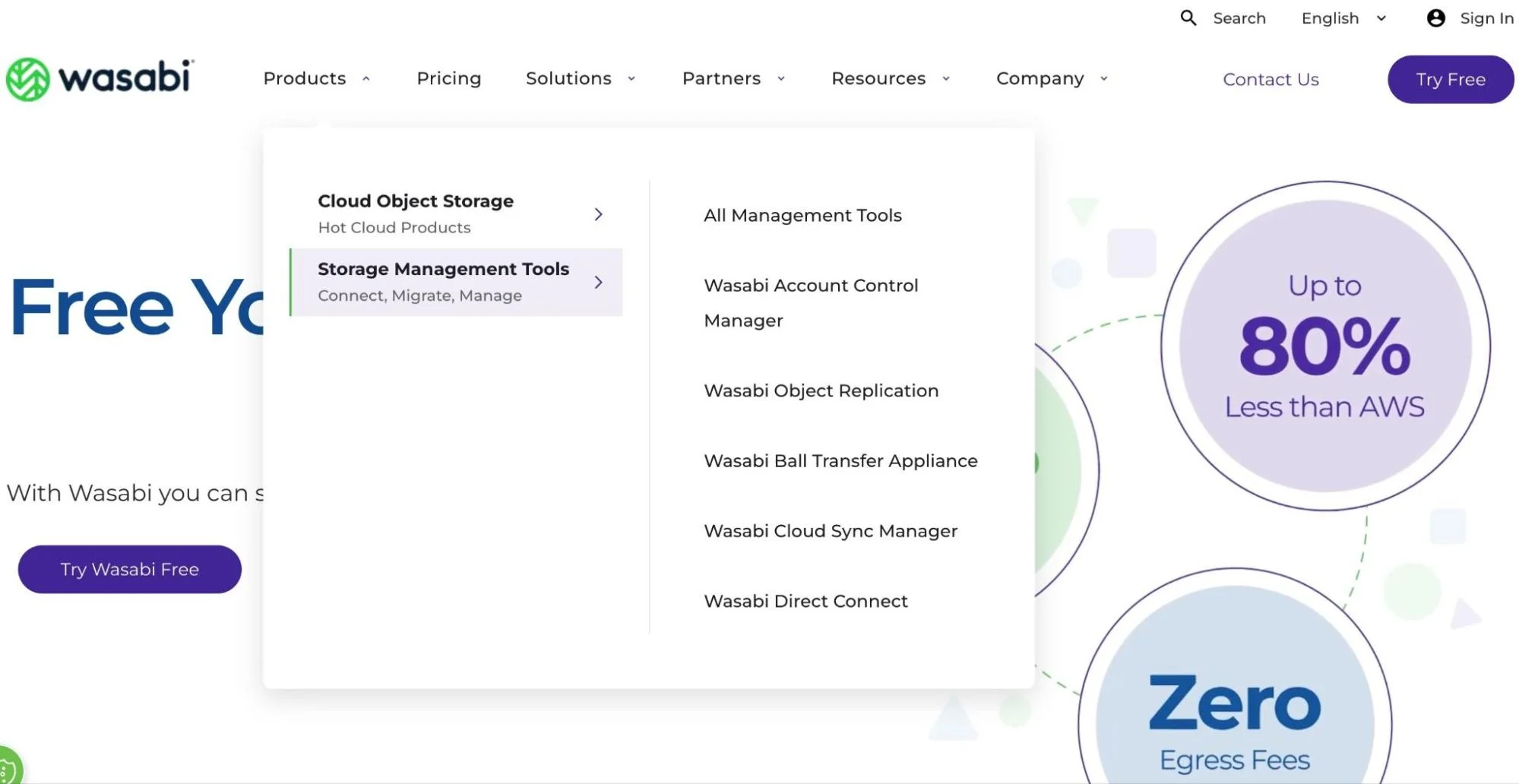
Wasabi delivers simple, S3-compatible cloud storage at a fraction of the cost of AWS S3, with no egress fees or API request charges.
Unlike general-purpose CSPs, Wasabi focuses on storing and retrieving large volumes of data quickly and affordably. Its infrastructure is optimized for performance, security, and price transparency.
15. OVHcloud – Best for European teams
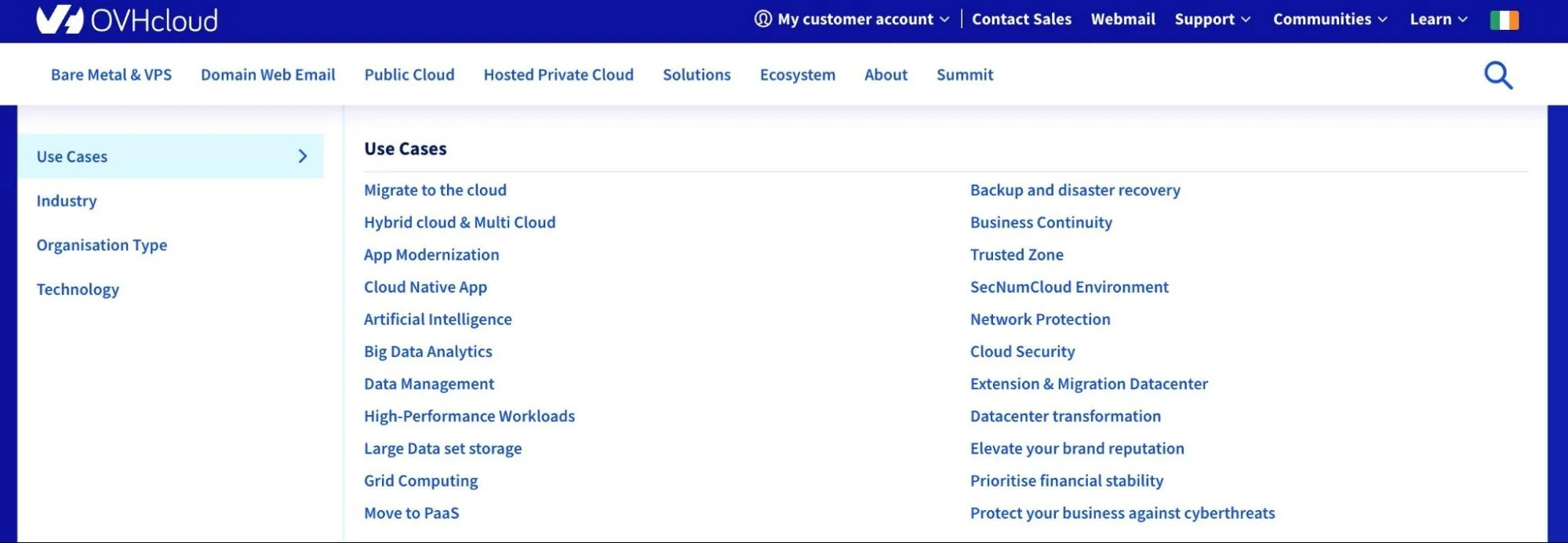
OVHcloud offers IaaS, PaaS, and Hosted Private Cloud services with full-stack control, designing its own servers and managing its global network.
Services include scalable VMs, Kubernetes, and private cloud hosting.
16. Backblaze B2 – Object storage for backup and archiving
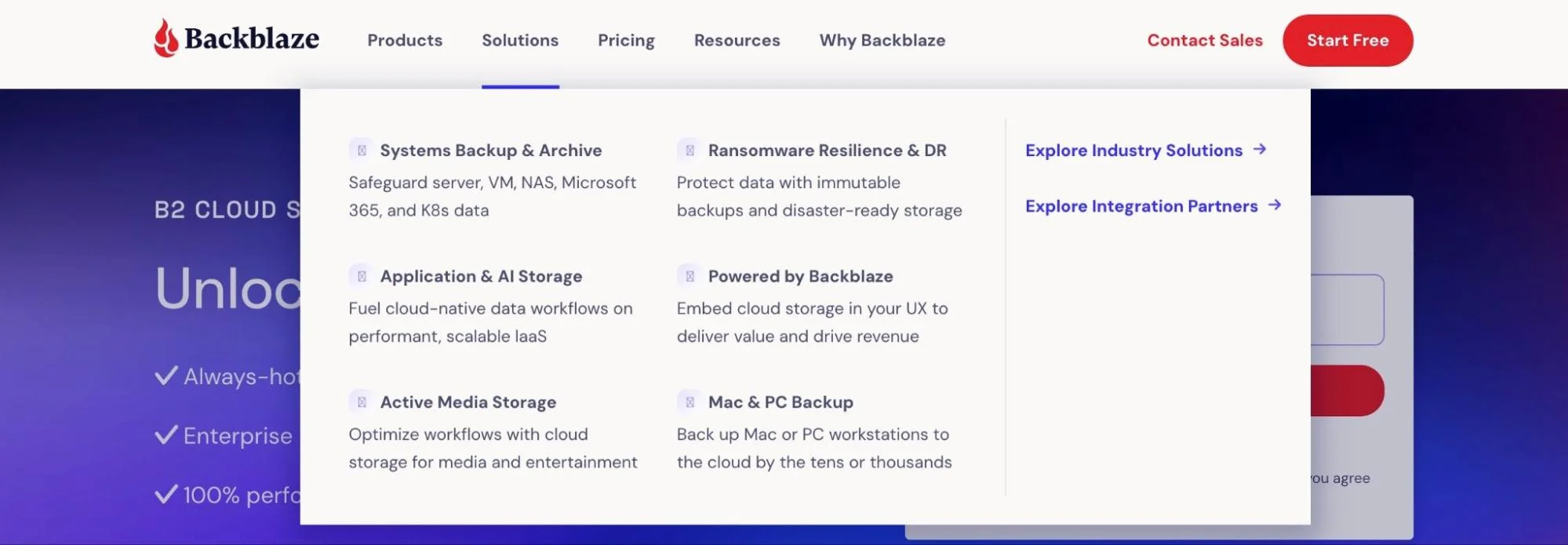
Backblaze B2 specializes in low-cost, high-durability object storage ideal for backups, long-term archiving, and media storage. It competes directly with AWS S3 but at a fraction of the price, making it a favorite for budget-conscious teams.
Backblaze B2 integrates seemlesllwsy with other platroms such as Veeam, Synology, and Cloudflare.
17. Rackspace – Best For Unpredictable Cloud Needs
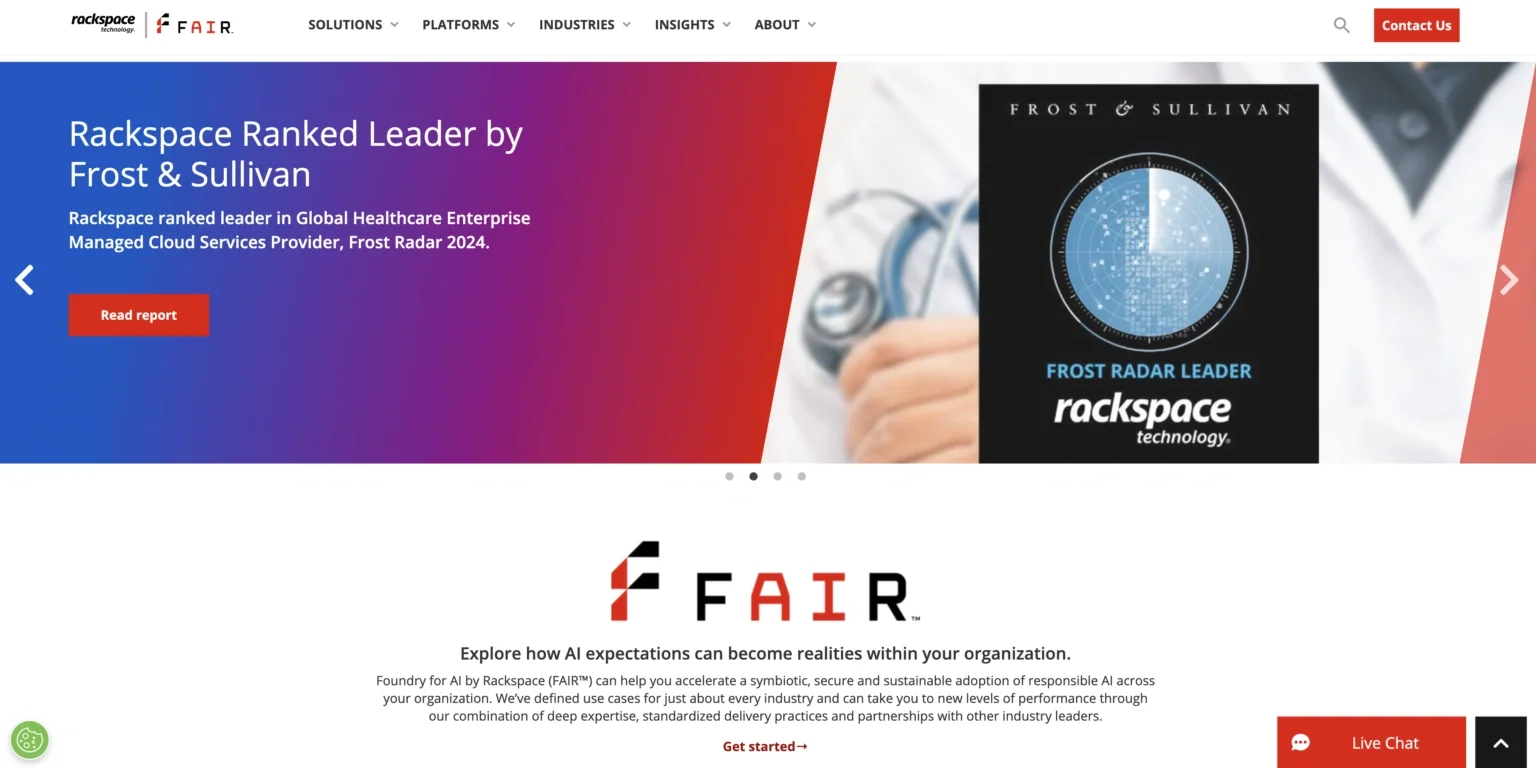
Known for its robust infrastructure and high-performance cloud solutions, Rackspace offers a blend of public, private, and hybrid cloud environments tailored to meet diverse customer requirements. Their managed cloud services stand out, providing businesses with expert support and management, which helps streamline operations and reduce the burden on internal IT teams.
One of the most commendable aspects of Rackspace is its Fanatical Experience®, a trademark approach to customer service that emphasizes responsiveness, expertise, and a deep commitment to customer success.
However, the company still shares only a fraction of the cloud market, and some users have noted that Rackspace’s pricing can be higher than that of other cloud service providers.
18. Cloudflare – Global network services for security and performance
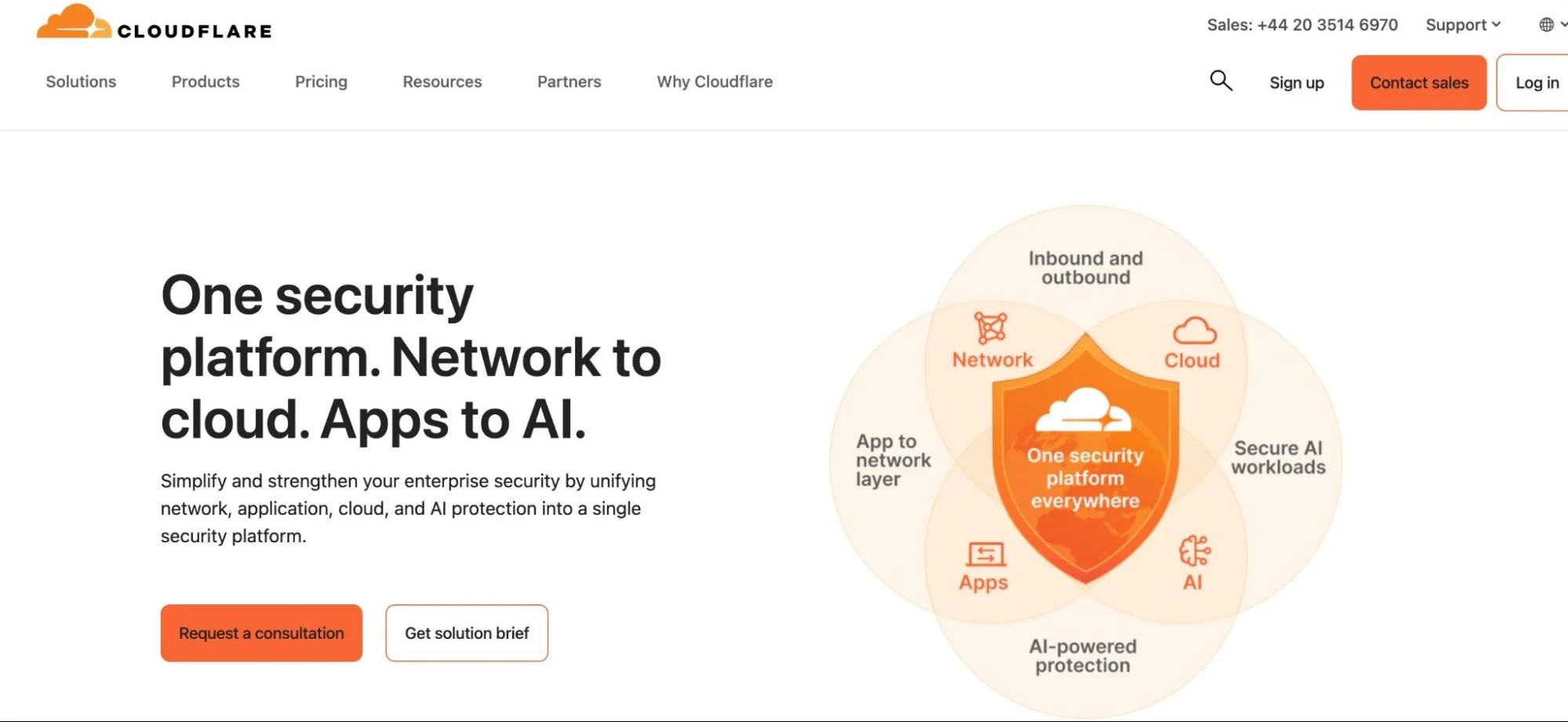
Cloudflare is best known for its edge-based services that boost site performance and security. It offers DDoS protection, CDN delivery, DNS, bot mitigation, and internet routing security.
Its infrastructure spans 300+ cities in over 100 countries, which helps reduce latency and improve web reliability.
Cloudflare is also one of the few cloud providers preparing for the future of encryption with post-quantum cryptography.
19. Kamatera – Custom cloud infrastructure with global reach
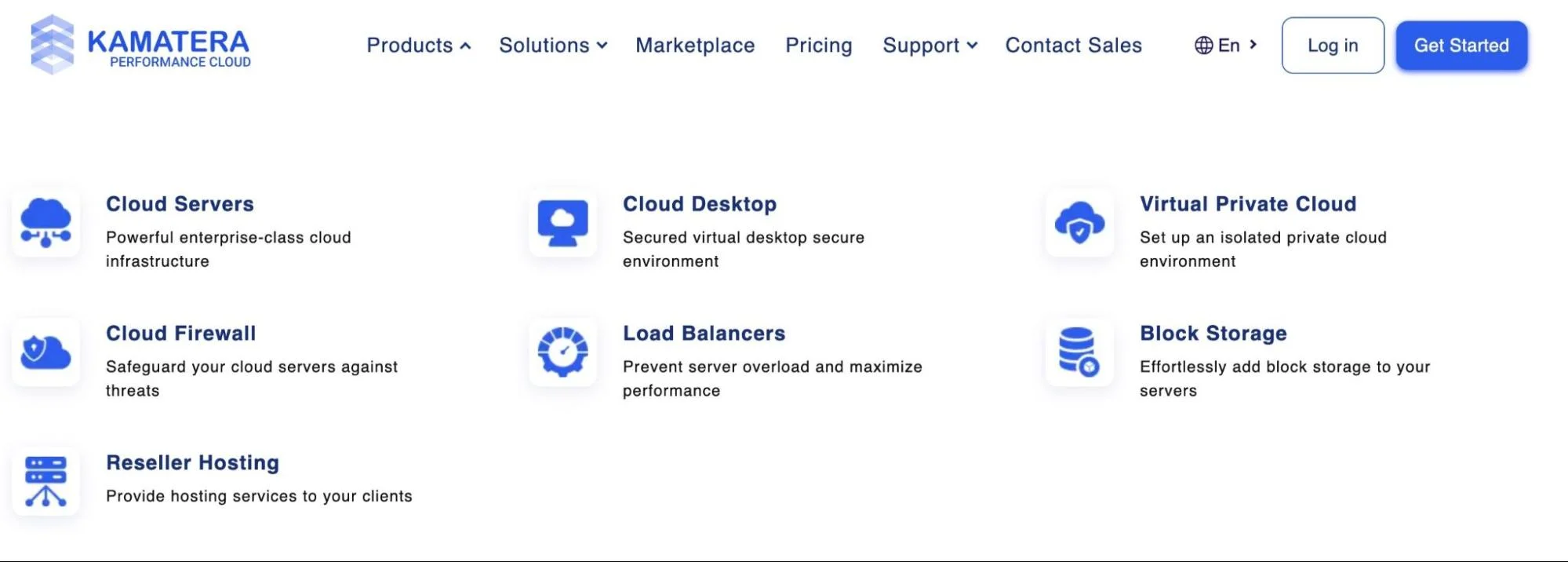
With data centers in 24 locations worldwide, Kamatera supports low-latency, high-performance deployment across the U.S., Europe, Asia, and the Middle East.
Kamatera primarily delivers IaaS, enabling users to configure and launch virtual machines in seconds. You can fully customize your CPU, RAM, storage, and OS infrastructure based on your workload needs.
It also offers managed cloud hosting, load balancing, firewalls, and block storage.
20. HPE GreenLake – On-prem meets cloud with as-a-service flexibility
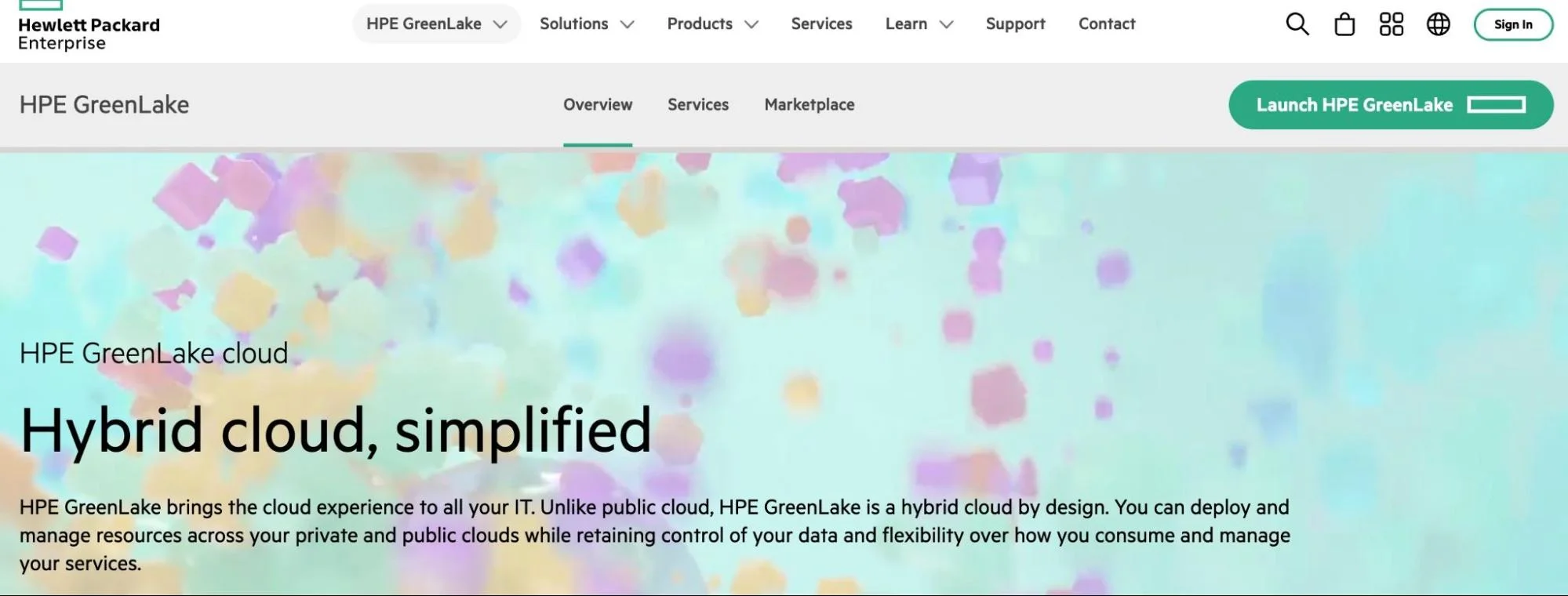
HPE GreenLake blends the control of on-prem infrastructure with the flexibility of cloud services. It delivers IaaS, storage, compute, container management, and workload solutions through a consumption-based pricing model inside your data center.
GreenLake is ideal for enterprises with strict compliance or latency needs. It helps modernize IT without complete cloud migration, supports hybrid setups, and scales on demand.
It also offers backup, private cloud, SAP, and machine learning services — all managed via a single, unified platform.
21. Heroku – Developer-friendly PaaS for rapid deployment

Heroku is a PaaS owned by Salesforce. It is built for simplicity, enabling developers to deploy applications with just a git push. It also supports multiple programming languages such as Python, Node.js, Ruby, Java, and more.
Heroku also offers managed services such as Heroku Postgres and Redis, plus a marketplace full of plug-and-play add-ons. Built-in scaling, GitHub integration, and a smooth deployment pipeline help teams move from idea to production with ease.
22. Vultr – Low-cost, high-performance cloud platform
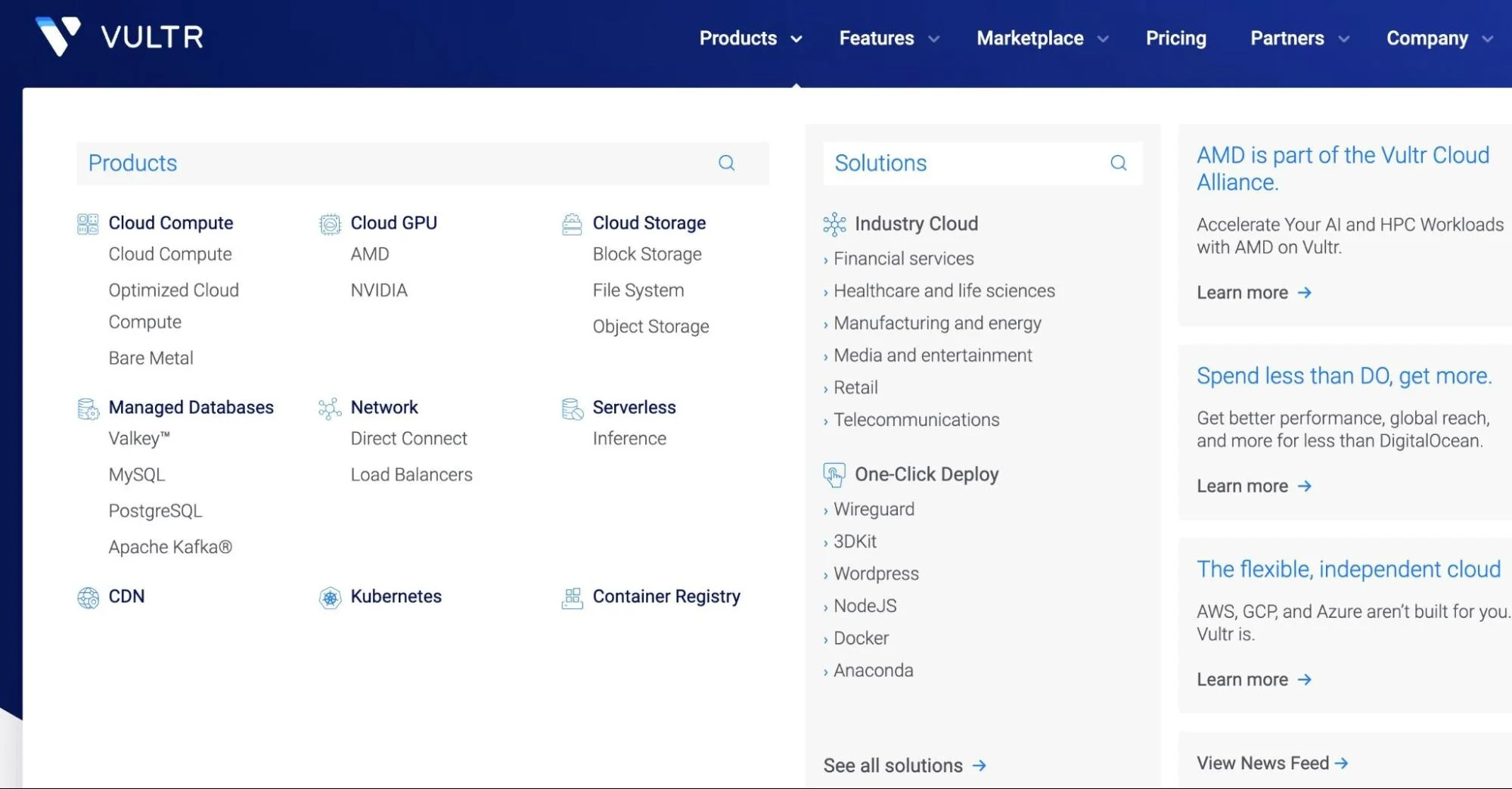
Vultr specializes in cloud compute, including VMs, optimized cloud compute, and bare metal services. It also delivers cloud GPU services powered by AMD and NVIDIA — a standout feature for those running AI or HPC workloads on a budget.
It also offers block, object, and file storage, managed databases (such as MySQL, PostgreSQL, and Apache Kafka), Kubernetes, and a container registry.
Vultr’s one-click deployment tools support Docker, WordPress, Node.js, Laravel, and more, ensuring your infrastructure is fast and smooth.
23. Hetzner Online – Affordable dedicated servers and VPS hosting
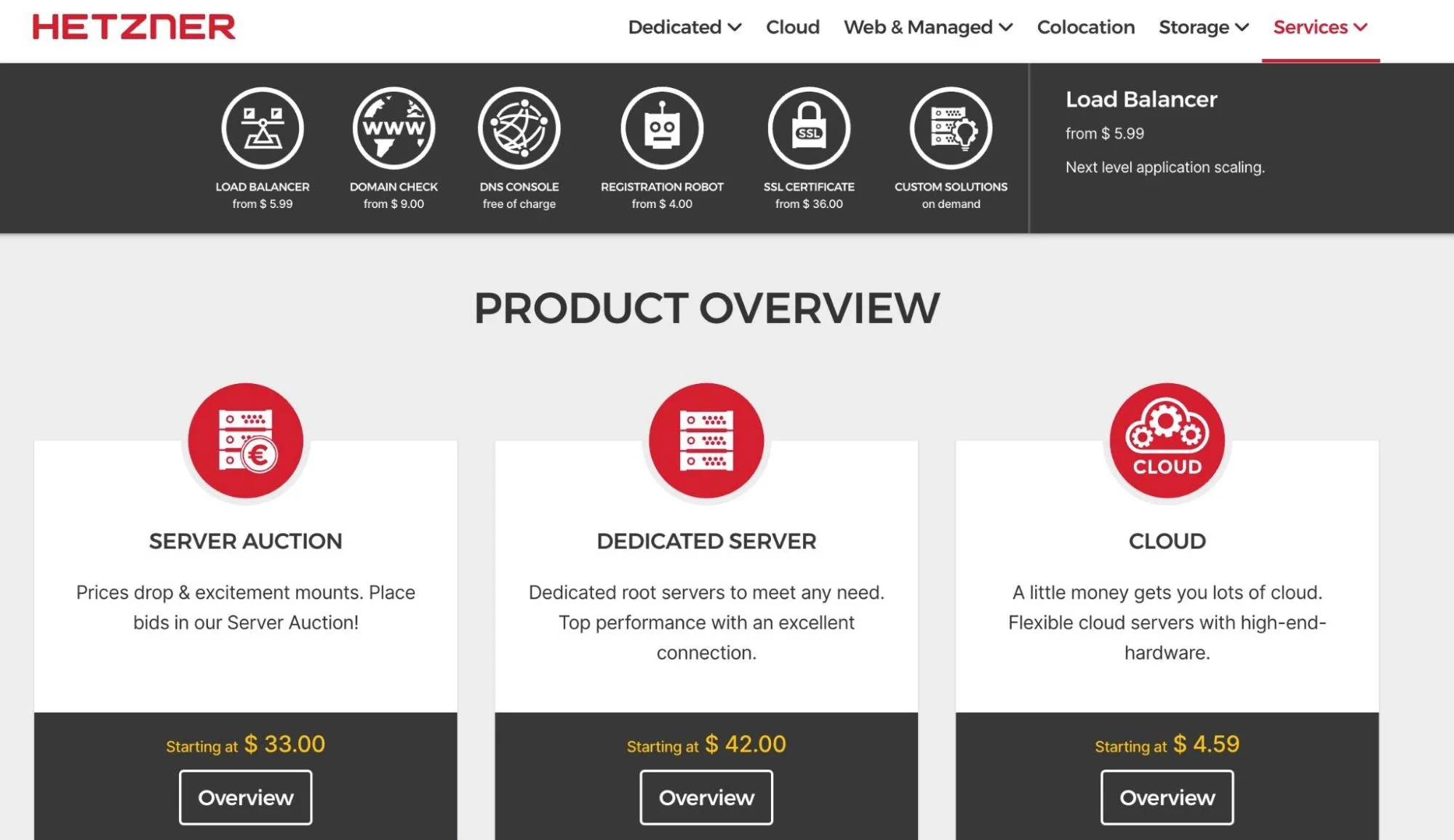
Hetzner is a German CSP that mainly focuses on dedicated hosting. Customers can access bare-metal servers with complete control, predictable pricing, and no hidden fees. Their cloud platform also includes scalable virtual machines, load balancers, block storage, and private networking.
24. Scaleway – Best for European teams
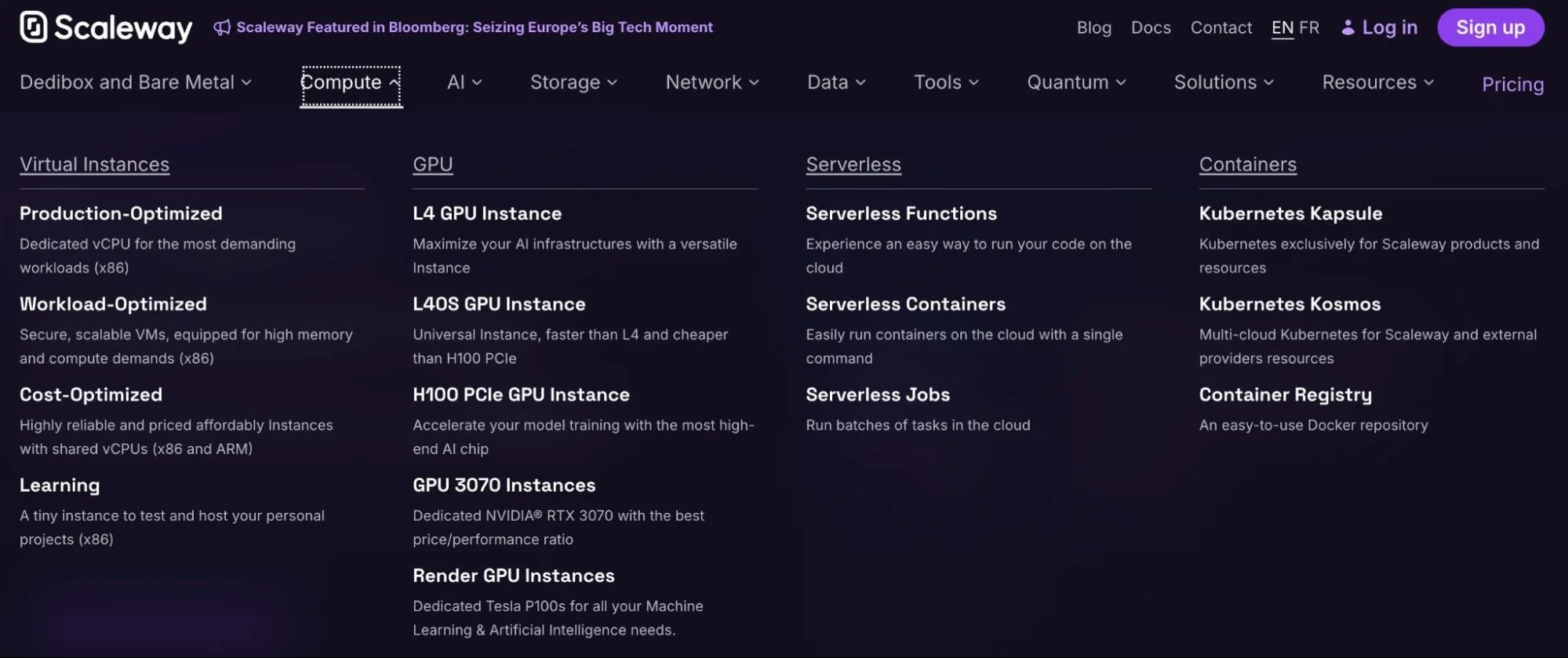
Scaleway is a France-based cloud provider known for its clean design, developer focus, and green data centers.
Its compute options range from cost-optimized VMs to production-grade and GPU-powered instances for AI training. You’ll find support for L4, H100 PCIe, and Render GPUs — ideal for machine learning workloads.
Scaleway also simplifies serverless, with Functions, Containers, and Jobs for lightweight, event-driven apps. Kapsule supports Scaleway-native Kubernetes for container orchestration, while Kosmos adds multi-cloud flexibility.
Related read: Top 13 AWS Lambda Alternatives For Serverless Computing
What Next: View, Understand, And Control Your Cloud Costs Per CSP With CloudZero
Most cloud cost tools struggle to collect accurate cost data. That’s partly because they over-rely on manual tagging, even when most companies don’t have perfect cost allocation tags.
Yet the more companies deploy workloads across multiple cloud service providers’ platforms, the more they’ll need a cloud cost intelligence platform that delivers easy-to-digest and actionable cost insights.
CloudZero’s cloud cost intelligence approach enables you to:
- Obtain, enrich, analyze, and act on comprehensive cost data from any of the big three cloud service providers.
- Collect, analyze, and share hourly cost information in hybrid/multi-cloud deployments (AWS, Azure, GCP).
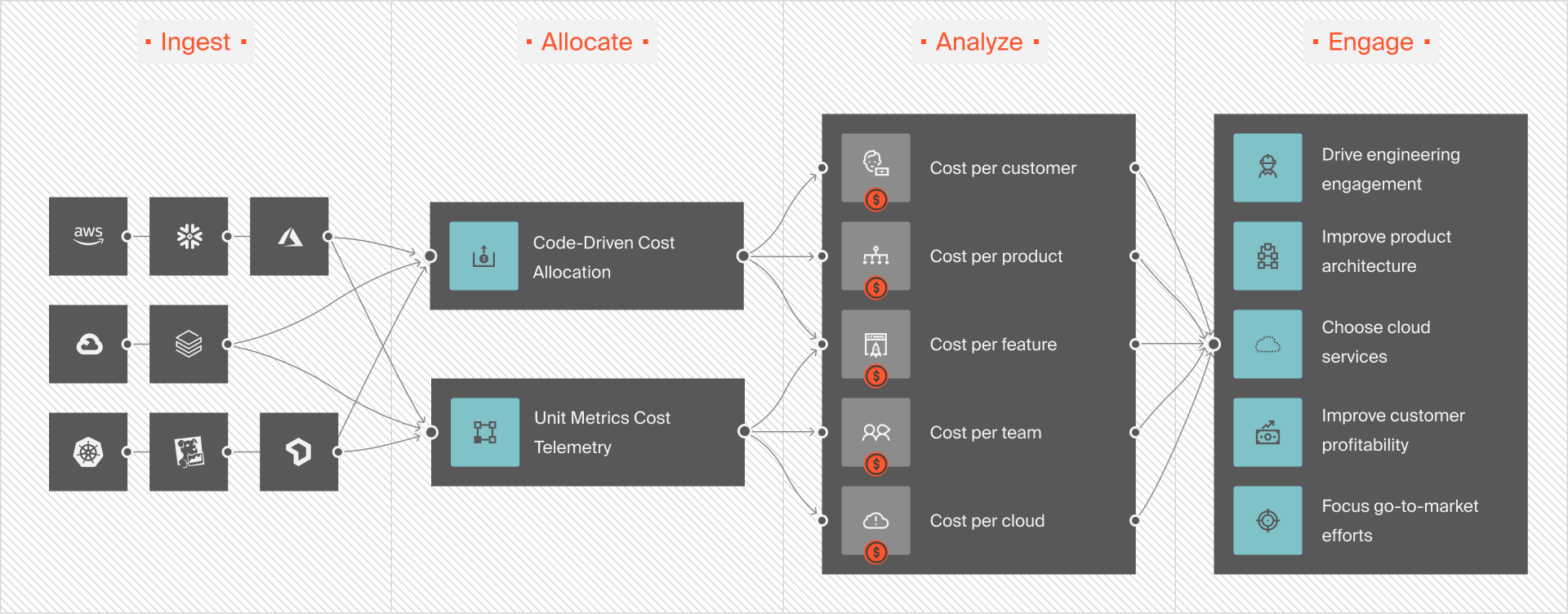
- Measure the costs of cloud services such as Snowflake, MongoDB, Databricks, New Relic, and Kubernetes with context.
- Measure and track the costs associated with supporting a particular customer, product, feature, project, environment, and more such dimensions.
- Use CloudZero Advisor to pick the right instances for your AWS, GCP, or Azure workloads.
- Analyze individual tenant costs in a multi-tenant environment.
- Ensure your engineers receive timely Slack alerts regarding anomalous cost trends in their systems. This way, they can intervene to prevent overspending.
Yet, reading about CloudZero is nothing like seeing it in action.  to see why brands like Drift (saved $2.4 million), MalwareBytes, and Remitly rely on CloudZero to help their organizations better understand, manage, and control their cloud spend.
to see why brands like Drift (saved $2.4 million), MalwareBytes, and Remitly rely on CloudZero to help their organizations better understand, manage, and control their cloud spend.
FAQs About Cloud Service Providers
What is a cloud service provider?
A cloud service provider (CSP) is a company that offers cloud-based infrastructure and services like storage, computing, and networking over the internet. You rent the tech you need instead of building and managing it yourself.
Who are the top 3 cloud service providers?
As of 2025, the top three CSPs are AWS with a 29% market share, Microsoft Azure with 22%, and Google Cloud Platform (GCP) with 12%. Together, they power more than 63% of the global cloud market. Compare AWS, Azure, and GCP here.
What is vendor lock-in?
Vendor lock-in happens when it’s complex or expensive to switch cloud providers. This can be due to unique tools, custom setups, or data transfer fees that tie you to one provider. See our complete guide to the best multi-cloud management tools.
What are the drawbacks of using a single cloud provider?
Sticking to one CSP can limit flexibility. If they raise prices or have an outage, your whole system is at risk. It’s also harder to avoid lock-in or optimize costs across different providers. Check out our guide on how to build a successful cloud strategy.

